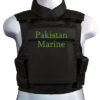From Seoul’s bustling streets to the high-fashion runways of Paris and New York, Korean fashion—commonly known as K-Fashion—has risen from a regional trend to a global phenomenon. Once overshadowed by Western fashion powerhouses, South Korea has rapidly emerged as a style influencer, shaping the wardrobes of Gen Z, millennials, and even luxury fashion brands. So, what exactly propelled K-fashion to such dizzying heights of global relevance?
Let’s break down the key elements that turned the Korean style into a universal language.
Hallyu Power: The K-Pop and K-Drama Influence
The Korean Wave, or Hallyu, didn’t just bring music and dramas to international screens—it brought fashion, too. K-pop idols like BTS, BLACKPINK, and NewJeans are not only chart-toppers but trendsetters. Their meticulously styled appearances in music videos, airport fashion, and endorsements have made them walking billboards for Korean style.
- Luxury meets streetwear: Collaborations like Jennie (BLACKPINK) x Calvin Klein and BTS x Louis Vuitton show how idols blend edgy street looks with high fashion.
- Global fans, global impact: Millions of fans replicate these looks on social media, creating a ripple effect in fashion trends worldwide.
Seoul Street Style: Where Individualism Meets Aesthetic
Seoul has become a fashion capital in its own right, known for its bold yet cohesive street style. K-Fashion thrives on mixing and matching, layering, and unisex silhouettes—offering a fresh alternative to Western mainstream styles.
- Districts like Hongdae and Garosugil serve as live runways, with trendsetters showcasing everything from oversized blazers to colourful accessories.
- Gender-neutral and playful elements allow for experimentation, embracing both minimalism and maximalism in a single outfit.
Korean Designers Conquering Global Catwalks
Korean fashion designers are increasingly gaining international recognition, contributing to the rise of K-fashion on the luxury stage.
- Minju Kim, winner of Netflix’s Next in Fashion, and brands like Wooyoungmi, Andersson Bell, and Pushbutton are now featured in global fashion weeks.
- These designers blend Korean cultural roots with modern silhouettes, challenging the boundaries of conventional fashion design.
Digital Virality: How Social Media Amplified K-Fashion
K-Fashion’s meteoric rise owes much to its presence on platforms like Instagram, TikTok, and YouTube. Fashion vloggers and influencers regularly feature Korean brands and styling tips, making them accessible to a global audience.
- K-Drama wardrobes—from shows like Crash Landing on You and It’s Okay to Not Be Okay—spark fashion frenzies, with fans hunting down the exact pieces worn on screen.
- Affordable fashion hauls from Korean online stores like YesStyle and Stylenanda are a hit among style enthusiasts worldwide.
Korean Fashion is all about Balancing Style, Quality, and Accessibility
Another significant aspect of K-fashion lies in its practicality. Korean brands often prioritize both aesthetics and function without compromising quality.
- Affordable yet stylish: Korean fashion doesn’t require breaking the bank, making it accessible to a wide audience.
- Sustainability rising: As global awareness of eco-friendly fashion grows, many Korean brands are shifting toward more sustainable practices and materials.
Conclusion:
The landscape of K-Style fashion reflects a rich tapestry of cultural shifts, global influences, and innovative trends that have catapulted South Korea’s style to the forefront of international fashion. In recent years, K-Style has evolved from a niche interest to a worldwide phenomenon, captivating fashion enthusiasts across the globe with its unique blend of tradition and modernity.
For a broader understanding of the cultural context behind K-Style fashion, check out:
Korean Culture Guide: Decoding Korea’s Rich Heritage.
Complete Guide To K-Style Fashion: A Tapestry Of Tradition And Modernity – Seoul Blend

































